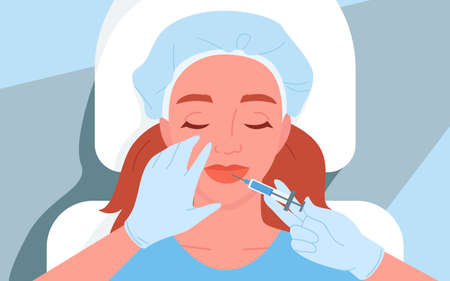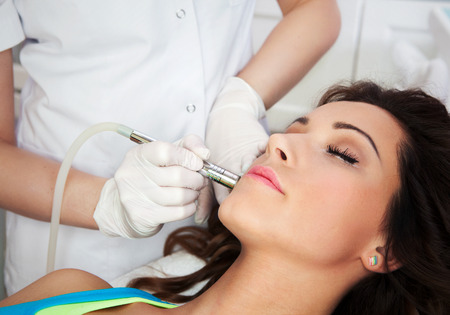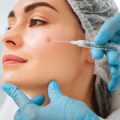Introduction to IPL and Its Growing Demand in the UK
Intense Pulsed Light (IPL) therapy has rapidly established itself as a staple within British dermatology clinics, reflecting a broader trend towards non-invasive aesthetic treatments across the UK. Unlike laser procedures that utilise a single wavelength, IPL emits a broad spectrum of light, enabling it to target multiple skin concerns with considerable precision. This versatility has contributed to its growing popularity among British patients seeking effective solutions for issues such as pigmentation irregularities, vascular lesions, and unwanted hair. As more individuals in cities from London to Manchester turn to IPL for both cosmetic and therapeutic purposes, there is an increasing emphasis on ensuring safe and optimal outcomes. Consequently, expert guidance from British dermatologists regarding pre- and post-treatment care has never been more pertinent. This article delves into practical advice tailored for UK patients, setting the stage for informed choices and successful results.
2. Essential Pre-Treatment Guidelines Recommended by British Dermatologists
Before embarking on IPL (Intense Pulsed Light) therapy, it is crucial to prepare adequately to ensure optimal results and minimise risks. British dermatologists emphasise tailored guidelines that reflect the unique climate and lifestyle habits of the UK. Below are the core recommendations for anyone considering IPL treatment across England, Scotland, Wales, or Northern Ireland.
Sun Exposure: Navigating the Unpredictable British Weather
Despite the UK’s reputation for overcast skies, incidental sun exposure remains a concern, especially during spring and summer months. Dermatologists recommend:
| Preparatory Step | Details |
|---|---|
| Avoid direct sunbathing | Refrain from deliberate tanning (outdoors or sunbeds) for at least 4 weeks prior to your session. |
| Use broad-spectrum sunscreen | Apply SPF 30+ daily, even on cloudy days, to all areas intended for IPL treatment. |
| Wear protective clothing | Cover treated areas with hats or long sleeves when outdoors. |
Skincare Products: What to Pause and What to Continue
Certain active ingredients in skincare can heighten skin sensitivity or interact adversely with IPL. UK dermatologists suggest:
- Discontinue retinoids and exfoliants: Cease use of retinol, AHAs, BHAs, and vitamin C serums at least 5–7 days before treatment.
- Avoid self-tanning products: Do not apply fake tan or gradual tanning lotions for at least two weeks prior, as they can affect light absorption and increase risk of uneven results.
- Continue gentle cleansing: Use mild, fragrance-free cleansers and moisturisers suitable for the UK’s often damp or cold conditions.
Lifestyle Habits: Adjustments Specific to the UK Context
The UK’s social calendar and climate pose unique considerations:
- Avoid waxing, threading, or plucking: For at least four weeks before IPL, opt for shaving if hair removal is needed—these methods leave follicles intact for effective treatment.
- Minimise alcohol intake: Particularly important in the run-up to special events (e.g., bank holidays), as alcohol can increase skin sensitivity and dehydration.
- Stay hydrated: The variable British weather can impact skin moisture levels; drink plenty of water in the days leading up to your session.
Summary Table: Key Pre-IPL Preparations for UK Patients
| Category | Main Actions | Timeframe Before IPL |
|---|---|---|
| Sun Protection | No sunbeds/sunbathing; use SPF 30+; wear protective clothing | 4 weeks minimum |
| Skincare Products | No retinoids/exfoliants/tanning products; stick to gentle cleansers/moisturisers | 1–2 weeks minimum depending on product type |
| Lifestyle Habits | No waxing/plucking/threading; limit alcohol; hydrate well | Up to 4 weeks (hair removal); a few days (alcohol/hydration) |
By closely following these evidence-based guidelines from British dermatologists, you will be better prepared for IPL treatment—maximising benefits while minimising unwanted side effects specific to UK conditions.

3. What to Expect During an IPL Session in Britain
Understanding the typical process of an IPL (Intense Pulsed Light) session is essential for anyone considering this treatment in the UK. British dermatologists emphasise transparency and patient comfort, ensuring that individuals know exactly what to expect before stepping into a clinic. Here’s a step-by-step breakdown of the experience, tailored to local practices and patient concerns.
Initial Consultation and Patch Test
Your journey begins with an in-depth consultation with a certified dermatologist or trained clinician. They’ll assess your skin type, medical history, and suitability for IPL. In line with UK safety standards, a patch test is almost always performed on a small area at least 24 hours prior to the full session. This helps identify any potential adverse reactions and ensures the correct settings are chosen for your skin type.
The Day of Your Treatment
On arrival, you’ll be welcomed into a clean, professional setting—British clinics prioritise hygiene and patient privacy. After confirming your details and reviewing any changes since your patch test, the practitioner will cleanse the treatment area to remove any makeup, lotions, or oils. Protective eyewear is provided for both you and your practitioner to shield against the bright flashes of light.
Step-by-Step Treatment Process
1. Preparation: A cool gel is applied to the skin to improve light transmission and enhance comfort.
2. Application: The handheld IPL device is placed against your skin, delivering quick pulses of light. You may feel a mild stinging or snapping sensation—often likened to an elastic band flicking the skin—but most UK patients describe it as tolerable.
3. Coverage: The practitioner methodically covers the entire target area, taking care to ensure even treatment.
4. Cooling Down: Once complete, excess gel is removed and a soothing lotion or cold compress may be applied to minimise redness or warmth.
5. Post-Treatment Advice: Before leaving, you’ll receive aftercare instructions specific to British weather conditions—such as extra UV protection during unpredictable sunny spells—and guidance on what to expect over the coming days.
Common Questions Addressed
UK clients frequently ask about pain levels (usually minimal), recovery time (typically no downtime required), and how many sessions are needed (a personalised plan is created based on your goals). Practitioners here are trained to set realistic expectations: results appear gradually over several sessions, and minor redness or swelling may occur but generally resolves within hours.
Setting Accurate Expectations
Overall, British dermatologists strive for clarity and reassurance throughout the process. You can expect a professional, supportive environment with emphasis on both safety and visible results—helping you feel informed and confident from start to finish.
4. Immediate Aftercare: Calm and Protect Your Skin Post-IPL
Directly following IPL treatment, your skin will be especially vulnerable and reactive. British dermatologists consistently emphasise the importance of immediate aftercare to minimise discomfort and safeguard results, especially given the UK’s changeable weather conditions. Here’s practical guidance on what you should do straight after your session:
Soothing the Skin
Expect mild redness, warmth, or a tingling sensation – all normal post-IPL reactions. To calm your skin:
- Apply a cool compress: Use a clean, damp flannel with cold (not icy) water for 10–15 minutes at a time.
- Avoid heat exposure: Steer clear of hot showers, saunas, or vigorous exercise for at least 24 hours.
- Opt for gentle skincare: Choose fragrance-free, hypoallergenic moisturisers such as E45 Cream or Cetraben, which are widely available in UK pharmacies.
Protection Against the Elements
The unpredictability of British weather—alternating between rain, wind, and rare sunshine—demands particular attention to skin protection post-IPL. Dermatologists recommend:
| Weather Condition | Recommended Action | UK-Available Product Examples |
|---|---|---|
| Sunny or Bright Days | Use high SPF broad-spectrum sunscreen (SPF 30+), even if cloudy. Reapply every two hours outdoors. | La Roche-Posay Anthelios SPF 50+, Boots Soltan Sensitive SPF 30+ |
| Rainy or Windy Days | Shield treated areas with clothing and avoid prolonged exposure to harsh winds. | Sainsbury’s Soft Cotton Scarves, Uniqlo UV Protection Accessories |
| Cold Weather | Moisturise frequently to combat dryness and chapping caused by central heating and chilly air. | Aveeno Daily Moisturising Lotion, Eucerin Advanced Repair Cream |
Cleansing & Daily Care Routine Tips
- Cleansers: Stick to mild, soap-free cleansers like Simple Kind to Skin Refreshing Facial Wash Gel or Cetaphil Gentle Skin Cleanser.
- Avoid actives: Pause use of products containing retinoids, exfoliating acids (AHAs/BHAs), or vitamin C for at least 48–72 hours post-treatment.
Avoiding Common Irritants
The UKs hard water can sometimes aggravate sensitive skin post-IPL. If possible, rinse your face with cooled boiled water for the first day. Additionally, refrain from using makeup until any redness subsides—mineral-based products are generally safer when you do return to cosmetics.
Summary Table: Immediate Aftercare Essentials Post-IPL in the UK
| Step | Product Suggestion (UK) |
|---|---|
| Cool Compress | Cotton flannel from Boots/Superdrug |
| Soothe & Moisturise | E45 Cream / Cetraben / Aveeno Lotion |
| Sunscreen Protection | La Roche-Posay Anthelios SPF 50+ |
| Mild Cleanser | Cetaphil / Simple Face Wash Gel |
Following these tailored recommendations ensures that your skin remains calm, protected, and primed for optimal IPL results—no matter what the British weather brings.
5. Long-Term Post-Treatment Care for Lasting Results
Securing lasting results from IPL (Intense Pulsed Light) therapy involves more than just immediate aftercare. British dermatologists emphasise the importance of adopting expert strategies for long-term skin health and maximising the benefits of IPL treatment.
Commitment to Sun Protection
Sun safety is paramount in the UK, where even overcast days can expose skin to harmful UV rays. Dermatologists recommend daily use of broad-spectrum SPF 30 or higher, reapplying every two hours if outdoors. Wide-brimmed hats and seeking shade during peak sunlight—typically between 11am and 3pm—are standard practices advised across Britain.
Establishing a Gentle Skincare Routine
Following IPL, maintaining a gentle skincare regimen is essential. British experts suggest using non-irritating cleansers and fragrance-free moisturisers to support barrier repair. Exfoliation should be limited and always conducted with caution to avoid undue stress on sensitive, treated skin.
Regular Follow-Up Appointments
Routine reviews with your dermatologist are encouraged to monitor progress and address any concerns early. In the UK, it’s typical to schedule follow-up visits every three to six months post-IPL, ensuring optimal results and timely intervention if issues arise.
Lifestyle Adjustments for Enhanced Results
British dermatologists also advocate for a healthy lifestyle to complement IPL outcomes. This includes staying hydrated, eating a balanced diet rich in antioxidants, and avoiding smoking or excessive alcohol consumption. Such holistic measures help sustain vibrant skin and reduce premature ageing.
By following these tailored recommendations, patients in Britain can enjoy enduring improvements from their IPL treatments while safeguarding their overall skin health in the unique British climate.
6. Addressing Common Concerns: Insights from UK Dermatologists
IPL treatments are increasingly popular across the UK, but patients often have concerns and misconceptions that can affect their experience and results. Leading British dermatologists highlight some of the most frequent queries they encounter in clinical practice. One common myth is that IPL suits all skin types equally; experts clarify that while modern devices are more adaptable, those with darker skin tones require individual assessment due to increased risk of pigmentation changes. Another typical question revolves around pain levels during treatment. UK specialists reassure patients that most experience only mild discomfort—often likened to the snap of an elastic band—with topical numbing creams available for sensitive individuals.
Safety and Side Effects: Expert Clarification
There’s a misconception that IPL can cause lasting skin damage or thinning. According to consultant dermatologists, when performed by certified practitioners using CE-marked equipment, IPL is very safe. Temporary redness or mild swelling may occur, but long-term adverse effects are rare if aftercare guidance is followed. Patients should always verify the credentials of their provider, as unregulated salons pose heightened risks.
Sun Exposure and Lifestyle Myths
Many UK patients believe they must avoid sunlight entirely for months post-treatment. Dermatologists clarify it’s critical to use a broad-spectrum SPF 30+ daily and avoid tanning beds or intentional sunbathing immediately before and after IPL sessions, especially given the UK’s unpredictable weather. However, normal outdoor activities with sun protection are generally acceptable.
Results and Maintenance: Setting Realistic Expectations
A frequent concern is how quickly results will be visible and how many sessions are needed. British experts advise that while some improvements may be noticeable after one session, optimal outcomes typically require a course of four to six treatments spaced several weeks apart. Maintenance sessions every six to twelve months may be recommended depending on individual goals.
By consulting qualified dermatologists and following tailored pre- and post-care regimens, UK patients can safely enjoy the full benefits of IPL technology—dispelling myths and ensuring best-in-class skin results.


